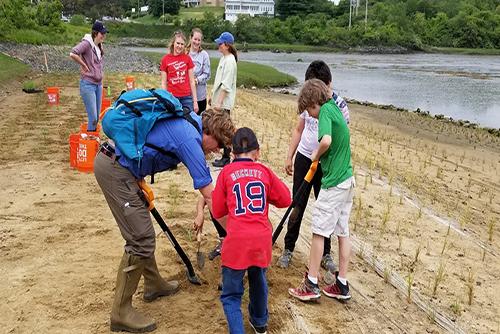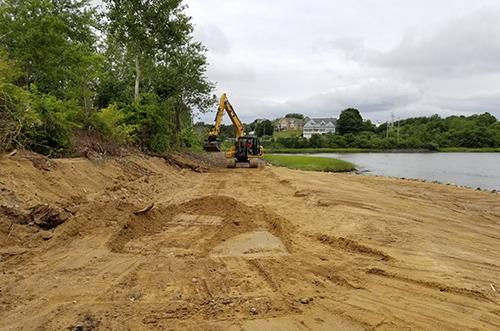
Dr. Gregg Moore works with volunteers on the Cutts Cover restoration project.
A Multi-Habitat Restoration in Cutts Cove, Portsmouth, NH. This project converted a rip rap shoreline into a fringing salt marsh with seaward oyster reefs. Site designs included the seaward sill, imported soils, and geomorphically consistent metrics (slopes, lengths, drainage, etc.). Faculty: David Burdick, Gregg Moore, Ray Grizzle and Thomas P. Ballestero.
The UNH Coastal Habitat Restoration Team developed a restoration plan within portions of Cutts Cove and received funding from the NH Aquatic Resource Mitigation program in 2016 to implement the restoration. The plan restores portions of the Cutts Cove with several existing habitats that are absent or poorly functioning at this time by: 1) enhancing the diversity and quality of approximately 60,000 sq ft of mudflat habitat through addition of native shell substrate; 2) partially removing 200 linear feet of shoreline armoring, creating 5,000 sq. ft. of new tidal marsh, and creating a vegetated tidal buffer zone (3,000 sq. ft.); and 3) creating functional connections among these tidal habitats and the adjacent upland City Gateway Park (planned) that will provide for habitat migration in the future (Table 1). In addition we will work with the City to provide signage to inform the public about the project.

Table 1: Summary of permitted impacts associated with the proposed Route 1 Bridge replacement and the restoration proposed by the UNH Coastal Habitat Restoration Team.

Site work performed to prepare for coastal restoration efforts.
